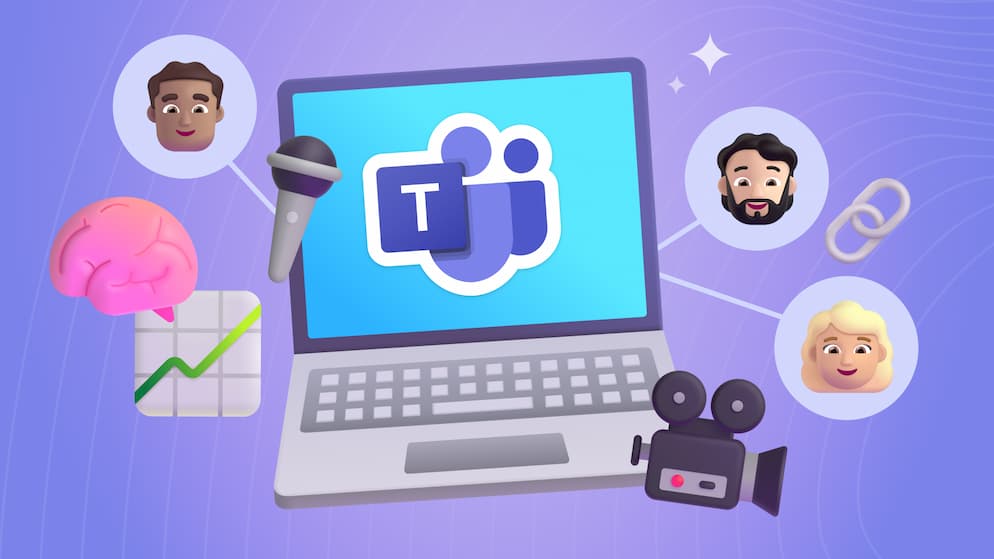3 Internal Communication Mistakes Organizations Make and How to Avoid Them
It’s incredibly easy for organizations to get stuck in the status quo of “doing things because that’s the way we do them”, especially with internal communication. So today I wanted to lay out a couple of common scenarios we see with our clients on that topic and share the “brighter future” that awaits if you’re willing to revisit your process.
Using Email as the Only Communication Tool

There is no doubt email has changed the way everyone works over the years, and it’s not going anywhere any time soon. But you’re probably relying on it too much. There’s something so transactional about an email that makes it hard to talk back and forth quickly on a topic.
Also, can you find me that one email where we talked about that one thing and figure out what we decided? It’s somewhere in a thread that we added and removed people that were CC’ed a few times, but it’s definitely there. Yuck.
A lot of these situations lead teams to use something like Skype to chat quickly and avoid emails, but if you didn’t know, there’s a handful of tools out there that flip a lot of these things on their head and work in a different way - tools like Slack and Microsoft Teams.
Instead of drafting an email, deciding who to include in the recipients, and coming up with a good subject line, your process will look like this: I know this thing that I want to talk about is relevant to the Operations team. I’m going to go to the sidebar of a tool like Slack/Teams, click the Operations channel, and send the message there.
Everyone that is part of the Operations team gets notified and can see it. But here’s the beautiful thing: They can also see all previous conversations with the Operations Team in that one place. It’s not just somewhere in a long list of email history that includes all the other external communication you’ve been doing, other teams you’re a part of, etc - It’s right there in context to the team.
I think that the main difference here is context. Instead of only being able to decipher the context of a message by the recipients and subject of the email, we have one place that ALL communication about “Operations” happens.
Not Having a Good Way to View History

Let’s talk more about seeing history. Laura down the hall just got hired, and she will play a role in Operations. There’s always going to be a bit of a process to onboard someone and get them acquainted with everything that’s going on, but if all you use is email, how on earth would they be able to reference back to a recent Operations decision and see the context around why it was made? “Oh, let me forward you that email thread.” Blech.
Here’s the alternative: “Hey Laura, I just added you to the Operations Team in Slack/Teams, you’re welcome to use that channel as a way to communicate with the rest of operations, as well as reference back to some previous conversations around the big push we’re making to change our client onboarding process”

SELF ASSESSMENT
Is your business getting full value from your M365 subscription?
Billions of dollars are wasted each year on underused subscriptions. Take 3 minutes to find out where your tools are driving results, and where they’re holding you back.
Find Out Now

Is Team Communication Holding You Back?
Find Out in Just 2 Minutes.
Take our quick scorecard to uncover communication gaps and hidden barriers within your team.
So that’s all great in the context of working on a team, but what about company history? All of those great little email newsletters about the latest happenings in your organization your communications team has been sending - where are they?
Not in Laura’s inbox. She has no way to know what’s been going on outside of relying on someone else to tell her or knowing enough to ask. What if you could say, “Laura, you’ll also notice whenever you open a web browser on your computer it opens our company intranet. You’ll find a lot of great resources for your work there, but it also has a ton of news about what’s been going on recently. You can catch up on recent events, outings, and even quarterly updates if you’re curious.”
Laura can then find her way and consume what she wants when she wants. She doesn’t have to rely on asking someone. This brings us to….
Relying on a Point Person to Answer All Questions

- “What is our benefits package again?” - “Ask Julie in HR”
- “Do we have the Friday before July 4 off? Or is it the Monday after?” - Ask Julie in HR
- “I want to update my direct deposit account” - Ask Julie in HR
- “What is my home office equipment allowance again?” - Ask Julie in HR
- “Where do I get company branded apparel” - “I don’t remember, but Julie in HR probably knows.”
Sound familiar? Maybe you’re Julie in this case. Do you ever get to put the phone down?
So, let’s be clear: Communicating the answers to these things is Julie’s job (for the most part). But instead of thinking of her role as “the source of truth/the only place to go”, her role should be to create a place for employees to access all the answers to these questions quickly, without:
- Knowing they have to call/email Julie in the first place
- Creating a dependency on Julie. What if she is sick that day? On vacation? Gets hit by a bus (that would be awful, who would we have to answer all our questions? Kidding…)
The common solution to this would be a company intranet as I mentioned in the earlier section. Part of her process whenever something new is happening in HR should be “how can I represent this on the intranet in a way that our employees can access easily”. If she doesn’t constantly ask that question, she’s creating a bottleneck for herself.
Closing Thoughts
There’s an aspect of all of this that leads towards less human-to-human interaction. And I get that. We need to preserve pieces of that because our world is constantly driving towards digital solutions that allow us to see each other and talk to each other less.
The line that I’m attempting to draw is: Some things should not need direct interaction like retrieving simple “FAQ” type answers. If Julie is on the hook for that, you’ll create a dependency problem. I would much rather Julie help create a place that is great to work because the information employees need is right at their fingertips instead of in her brain, and she can spend the difference in time innovating and creating meaningful connections with coworkers instead of being stuck.
Most of the time these things are happening because people “don’t know what they don’t know”. Well, now you know. What will you do with this information?






.jpg)






